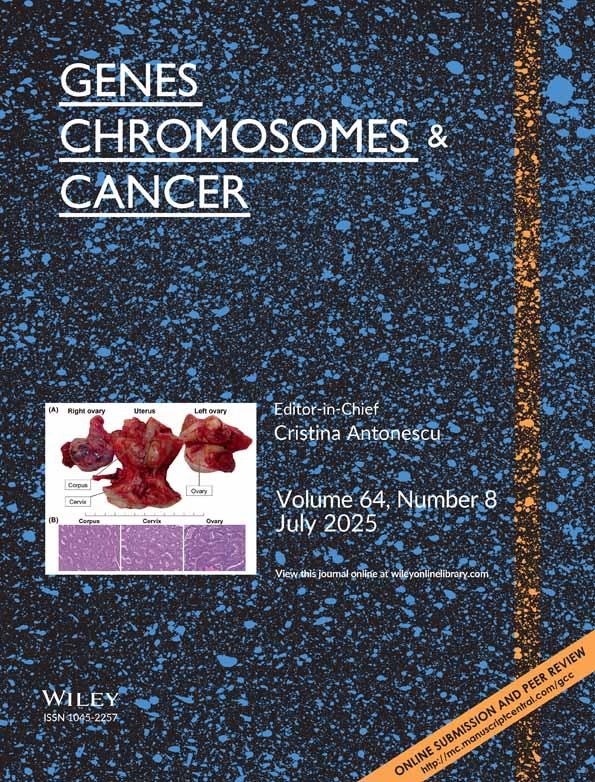A two-color BCR–ABL probe that greatly reduces the false positive and false negative rates for fluorescence in situ hybridization in chronic myeloid leukemia
Abstract
The t(9;22) translocation resulting in the fusion of BCRand ABLgenes is pathognomonic in chronic myeloid leukemia (CML) and may be investigated at the molecular level using fluorescence in situ hybridization (FISH). Two-color BCR–ABL probes visualizing one fusion signal (1F FISH) have high false positive rates (FPR) and false negative rates (FNR). The FPR is a result of the random spatial association of probe signals within normal interphase cells so that some cells appear to contain the BCR–ABLfusion gene. The FNR of 1F FISH probes depends on the distance between the BCR and ABL probes hybridized to the BCR–ABL fusion gene (≤368 kb); the “gap” between the signals causing the cell to be interpreted as normal. To overcome these difficulties, a two-color probe was used, employing four yeast artificial chromosome (YAC) sequences that span the breakpoint regions of the BCR and ABL genes and that visualize the two fusion signals BCR–ABL and ABL–BCRin CML cells (2F FISH). The FNR for the 2F FISH probes was assessed on clonal Ph+ granulocyte-macrophage-colony-forming cell (CFU-GM) derived colonies and was reduced to 0.4% (2/450), compared with an FNR of 13.5% (111/823) with 1F FISH. The FPR in normal mononuclear cells for the 2F FISH was 0.19 ± 0.12% (3/1,700), whereas the FPR using 1F FISH was 4.5 ± 2.3% (63/1,294). The 2F FISH can thus be used to evaluate very small frequencies of BCR–ABL-positive and -negative interphase cells and may be of use in the clinical monitoring of CML. Genes Chromosomes Cancer 23:109–115, 1998. © 1998 Wiley-Liss, Inc.




